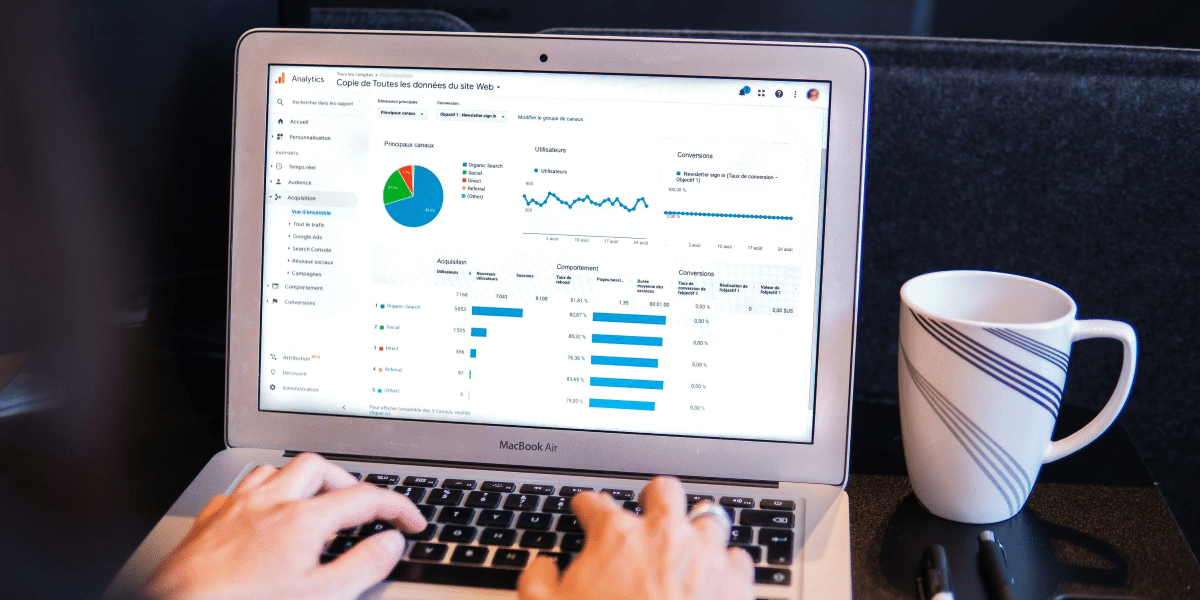There is no way to overstate the significance of utilizing data analytics for decision-making in today’s world based on so much data. Companies in different sectors are harnessing datasets to extract insights, enhance their operations, and make well-informed choices. This article explores how using data analytics is reshaping decision-making processes, discussing its advantages, practical applications and the obstacles it brings.
What is Big Data Analytics?
Data analytics involves identifying trends, patterns and relationships within raw data sets to support decision-making processes. These methods utilize known techniques like clustering and regression but apply them on a larger scale with the aid of modern tools. The term ” data” gained popularity in the 2000s as advancements in software and hardware enabled organizations to manage large volumes of unstructured data. Subsequent technological advancements have further increased the volume of data through platforms like Amazon and devices such as smartphones.
With the rise of data abundance, initial innovation initiatives such as Hadoop, Spark and NoSQL databases emerged to handle the storage and processing of datasets. This realm is continuously developing as data engineers seek ways to merge the volumes of information generated by sensors, networks, transactions, smart devices, web usage and more. Big data analytics techniques are being utilized alongside emerging technologies like machine learning to unveil and expand upon insights.
The Function of Big Data Analytics
Data analytics involves gathering, processing, cleansing and examining datasets to assist organizations in implementing their big data strategies.
Gathering Data
The process of data collection varies across organizations. With today’s technological advancements, organizations can collect both structured and unstructured data from sources ranging from cloud storage to mobile apps to in-store IoT sensors and beyond. Some data is stored in data warehouses for business intelligence tools and solutions to access. Raw or unstructured data that is too varied or complex for a warehouse may receive metadata tagging before being stored in a data lake.
Processing Data
After collecting and storing the data, it must be appropriately organized to yield results for queries, particularly when dealing with sizable unstructured datasets.
The amount of data is increasing rapidly, posing a challenge for organizations in terms of data processing. One approach to processing data is batch processing, which involves analyzing sets of data over time. Batch processing is beneficial when there is a gap between the collection and analysis of data. On the other hand, stream processing involves examining batches of data simultaneously, reducing the time lag between data collection and analysis to facilitate quicker decision-making. Stream processing tends to be more intricate and often comes at a cost.
To ensure high-quality results, it is essential to clean both small datasets by removing any irrelevant information while ensuring proper formatting. Failure to address data can lead to insights.
Preparing data for analysis requires time and effort. Ready advanced analytics techniques can transform data into valuable insights through various methods such as:
- Data mining: This technique sifts through extensive datasets to identify patterns and relationships by recognizing anomalies and forming clusters of relevant information.
- Analytics: By leveraging organizational data, predictive analytics forecasts future trends, highlighting potential risks and opportunities.
- Deep learning: This method mimics human learning processes by utilizing intelligence and machine learning algorithms layered together to detect patterns within complex and abstract datasets.
The Advantages of Utilizing Data Analytics
Enhanced Decision Making
One of big data analytics’ benefits is the improvement in decision-making processes. By examining data, companies can acquire insights that aid in making informed choices. This involves grasping customer behavior, recognizing market trends, and enhancing procedures.
- Insights Based on Data: Big data analytics offers a foundation for decision-making. Depending on gut feelings or intuition, managers can base their decisions on insights derived from data.
- Predictive Analysis: Predictive analysis utilizes data to predict results. This enables businesses to foresee market shifts, customer requirements and potential risks facilitating decision making.
Enhanced Operational Efficiency
Big data analytics has the potential to greatly enhance efficiency. By analyzing data, companies can pinpoint bottlenecks, streamline processes, and optimize resource usage.
- Optimizing Processes: Analytics can uncover inefficiencies in processes and propose enhancements. This could result in reduced production times, decreased waste, and reduced operational expenses.
- Resource Allocation: Understanding patterns of resource utilization aids in optimizing inventory levels, minimizing downtime, and ensuring resource allocation.
Improved Customer Experience
Understanding customer preferences and behavior is essential for providing a customized experience.
Utilizing big data analytics assists businesses in better understanding customer needs, allowing them to customize their products and services accordingly.
- Customization: Companies can provide tailored suggestions that enhance customer contentment and loyalty by examining customer data.
- Customer Segmentation: Big data enables the categorization of customers based on behavior, demographics and preferences. This facilitates targeted marketing efforts and improved customer service.
Practical Uses of Big Data Analytics
Healthcare
Big data analytics is utilized in the healthcare industry to enhance care, streamline operations, and drive research forward. By analyzing information, healthcare providers can design treatment plans, forecast disease outbreaks, and optimize operational processes.
- Predictive Healthcare: Predictive analysis can predict health outcomes, allowing for intervention and better management of chronic illnesses.
- Efficient Operations: Examining hospital procedure data can help optimize staff schedules, reduce patient wait times, and enhance resource distribution.
Retail
Retailers leverage data analytics to grasp consumer behavior patterns, better refine pricing strategies, and elevate the shopping experience. Retailers can make decisions that boost sales performance and enhance customer satisfaction by analyzing sales figures, customer feedback, and social media interactions.
Tailored Marketing
Analytics plays a role in crafting marketing campaigns that resonate effectively with individual customers, resulting in increased conversion rates. Retailers can enhance inventory management by examining sales trends to find the balance of stock, avoiding both shortages and excess supply.
In the realm of big data company analytics plays a role in risk assessment, fraud prevention and fostering customer relationships. Financial institutions delve into transaction details, market behavior and client information to make informed choices.
Manufacturing
Regarding risk management, predictive analytics aids in foreseeing threats so that financial entities can take measures; similarly, scrutinizing transaction patterns helps uncover activities to safeguard both the institution and its clients.
Manufacturers leverage data analytics to boost product quality, streamline production processes, and cut down on expenses. Manufacturers can refine efficiency and product standards by scrutinizing data from production lines, equipment sensors, and supply chains.
In terms of quality control procedures, using analytics promptly identifies flaws or inconsistencies in the manufacturing process for interventions, ensuring reliable product quality. Moreover, analyzing supply chain data assists in optimizing logistics operations and reducing lead times while strengthening supplier partnerships.
Summary
The impact of data analytics on decision-making processes is reshaping industries across sectors. By leveraging the volume, speed and diversity of data, companies can uncover practical insights, enhance operational efficiency and enrich customer interactions. Despite facing challenges related to data quality, security concerns and the demand for professionals, the future outlook for data analytics appears promising.
As advancements in AI and machine learning progress and real-time analytics become more widespread, the potential for data analytics to foster innovation and drive business growth will only expand. Embracing these developments and advocating for enhanced data literacy can position enterprises for success in a data environment.
Published By: Aize Perez



















